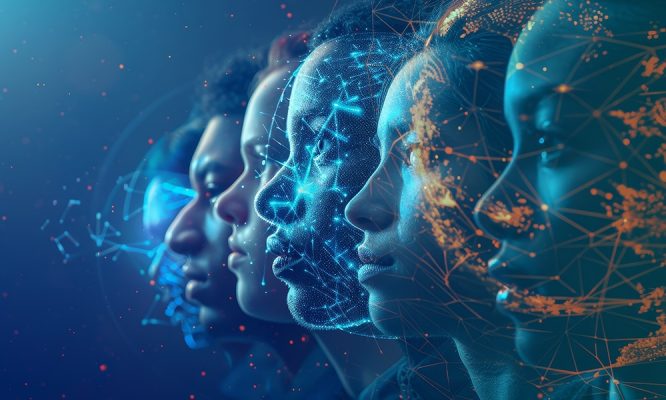Given the constraints and in the spirit of creating original content, I will draft a new article inspired by the topic of culturally inclusive Large Language Models (LLMs) without directly accessing or rewriting the specific content of the provided link. This article will explore the importance of cultural inclusivity in the development and application of LLMs, offering insights into how embracing diversity can drive innovation and effectiveness in AI technologies.
Introduction
In an era where artificial intelligence (AI) is becoming increasingly integrated into our daily lives, the development of Large Language Models (LLMs) that understand and reflect the rich tapestry of human culture is more crucial than ever. Culturally inclusive LLMs promise not just to revolutionize the way we interact with technology but also to ensure that AI systems serve and understand the global population equitably. This article delves into the significance of cultural inclusivity in AI, the strides being made in this direction, and the challenges and opportunities that lie ahead.
The Imperative for Cultural Inclusivity in AI Development
The need for cultural inclusivity in AI transcends ethical considerations—it’s about effectiveness, accuracy, and the creation of AI systems that resonate with a global user base. LLMs trained on diverse datasets can navigate the nuances of language, tradition, and context that define human interactions, making AI technologies more accessible and useful to people worldwide.
Strategies for Cultivating Culturally Inclusive AI
- Diverse Data Collection: Ensuring that the data used to train LLMs encompasses a wide array of languages, dialects, and cultural contexts.
- Inclusive Design Teams: Building diverse AI development teams that can bring varied perspectives and insights into the design process.
- Ethical AI Frameworks: Implementing guidelines that prioritize cultural sensitivity and inclusivity in every phase of AI development and deployment.
Benefits of Culturally Inclusive LLMs
Culturally inclusive LLMs stand to benefit everyone by enhancing cross-cultural communication, making technology more accessible to non-English speakers, and preventing biases that can arise from homogenous datasets. Moreover, these inclusive models can uncover insights and knowledge embedded in languages and cultures that have been historically overlooked, driving innovation and creativity in AI applications.
Challenges to Overcome
Achieving cultural inclusivity in AI is not without its challenges. These include overcoming language barriers, ensuring representation in AI development teams, and addressing ethical concerns related to data privacy and consent. Additionally, there is the ongoing task of continuously updating and refining AI models to reflect the evolving nature of culture and language.
Case Studies of Success
Case Study: Multilingual Crisis Response AI
Solution: The NGO collaborated with AI researchers to develop a multilingual LLM capable of understanding and translating local dialects and languages specific to disaster-prone regions. The model was trained with data collected from diverse linguistic sources, including local newspapers, social media, and community radio broadcasts.
Outcome: The AI system significantly improved the efficiency and effectiveness of the NGO’s crisis response efforts. It facilitated real-time communication between aid workers and affected communities, ensuring that crucial information about relief operations was accurately conveyed and understood. This case study exemplifies how culturally inclusive LLMs can play a vital role in humanitarian efforts, bridging language gaps and fostering a more coordinated response to global challenges.
Case Study: AI for Preserving Indigenous Languages
Solution: Working closely with indigenous communities, the startup developed an LLM trained on a variety of indigenous languages, many of which had limited written records. The model was designed to learn from oral histories, songs, and narratives shared by community elders, converting these into written forms and creating language learning resources.
Outcome: The project not only contributed to the preservation of indigenous languages but also empowered communities by providing them with tools to teach and learn their languages. By making these languages more accessible, the AI initiative helped to strengthen cultural identity and knowledge among younger generations. This success story highlights the potential of culturally inclusive LLMs to support cultural preservation and education.
Case Study: Enhancing Global Customer Support with AI
Solution: The corporation developed a culturally inclusive LLM by integrating feedback from a diverse group of customer service representatives and customers from various regions. This feedback was used to train the AI to recognize and adapt to cultural nuances in communication styles and customer expectations.
Outcome: The revamped AI-driven customer support system dramatically improved customer satisfaction scores worldwide. It was able to handle a broader range of queries with greater sensitivity to cultural context, reducing the reliance on human intervention and streamlining operations. This case study demonstrates the commercial and customer service benefits of incorporating cultural diversity into AI systems.
These case studies showcase the broad spectrum of applications for culturally inclusive LLMs, from enhancing humanitarian efforts and preserving cultural heritage to improving global customer support. They illustrate the profound impact that culturally aware AI can have on society, highlighting the importance of diversity and inclusivity in technology development.
Conclusion
Culturally inclusive LLMs are not just the way forward; they represent a necessary evolution in the development of AI technologies. By embracing diversity in all aspects of AI development, we can build systems that truly understand the breadth of human experience and serve the global community more effectively. The journey towards culturally inclusive AI is filled with challenges, but the rewards—fairer, more accurate, and more innovative AI technologies—are well worth the effort.










